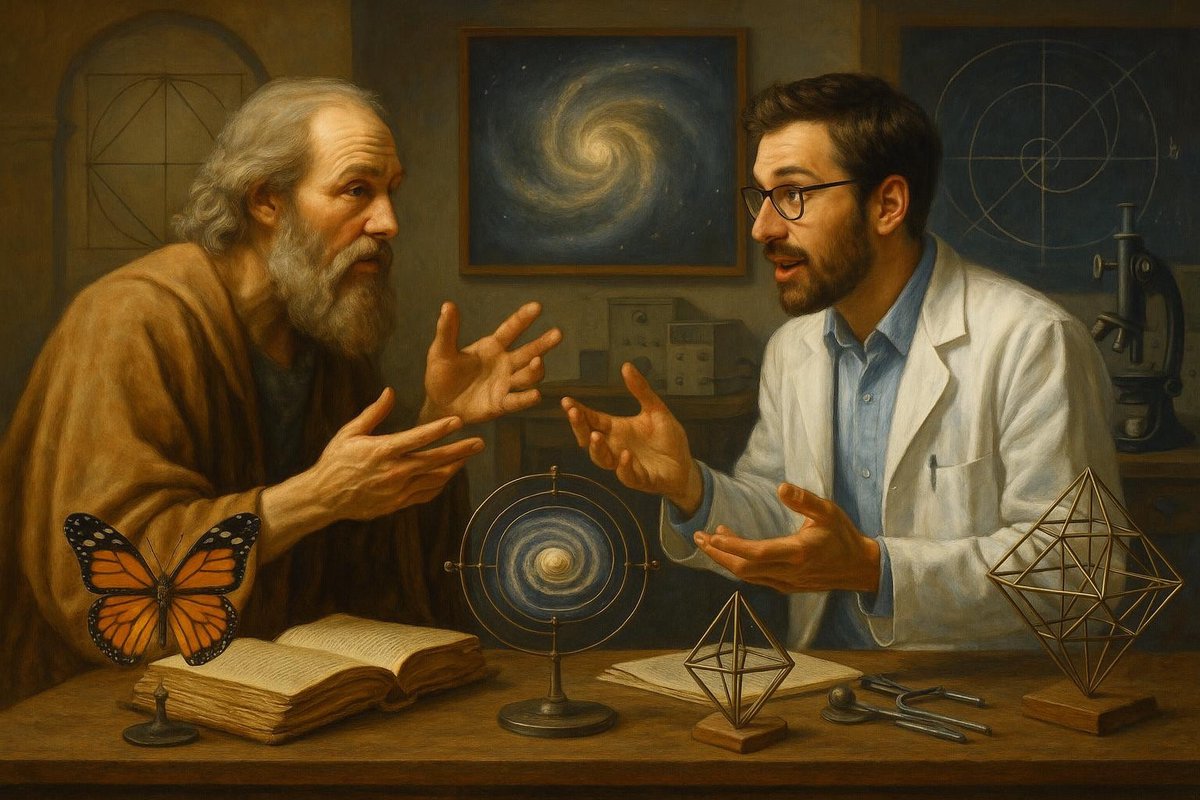
Introduction
Symmetry is everywhere around us. From the delicate patterns on a butterfly’s wings to the majestic spirals of galaxies, this simple concept transcends the boundaries of mere visual appeal. Interestingly, many people believe that symmetry has a deeper role, bridging various disciplines including science, art, and philosophy. But how does this natural phenomenon connect these seemingly disparate fields? As time goes on, it becomes clearer that symmetry is not just a scientific curiosity but a universal language that speaks to the core of our understanding, creativity, and existence.
Symmetry in Science: Nature’s Blueprint
In science, symmetry is a guiding principle that often reveals the workings of the universe. It is seen in fundamental laws and physical phenomena.
- Symmetry helps physicists predict particle interactions in quantum mechanics.
- Biologists find symmetry in the structures of molecules and organisms.
- Astronomers observe symmetrical patterns in galaxies and planetary systems.
Of course, symmetry doesn’t just help us understand what is, it also helps us hypothesize what could be. For example, the search for the Higgs boson was driven by a quest to complete the symmetrical framework of the Standard Model of particle physics. This reveals how symmetry acts as nature’s blueprint, offering both clarity and mystery in understanding the universe.
Art: The Aesthetic of Balance
In art, symmetry has long been cherished for its aesthetic appeal, creating balance and harmony.
- Classic art uses symmetry to create balance in composition.
- Modern art often plays with symmetry to evoke emotion and challenge perception.
- Architects use symmetrical design to convey stability and order.
No wonder artists throughout history have been drawn to symmetry. Take, for example, the Renaissance, where symmetry was seen as divine and was meticulously incorporated into paintings and sculptures. Artists like Leonardo da Vinci used symmetry to embody the ideal of human beauty and proportion, reflecting a deeper philosophical quest for perfection and harmony.
Philosophy: The Quest for Order
Philosophy often seeks to understand the order and chaos of existence, and symmetry provides a lens for this exploration.
- Symmetry is associated with balance and harmony, echoing philosophical ideals.
- Philosophers have debated the role of symmetry in aesthetics and ethics.
- Symmetry challenges us to consider the nature of perfection and imperfection.
Philosophically, symmetry serves as a metaphor for the balance between chaos and order. Thinkers like Plato believed in an ideal realm where symmetry and order reigned supreme, influencing the material world. This notion continues to inspire philosophical debates about the nature of reality and beauty, urging us to ponder the symmetries in our own lives and societies.
Bridging the Gap: An Interdisciplinary Dialogue
When science, art, and philosophy intersect through the lens of symmetry, a rich dialogue emerges.
- Symmetry encourages interdisciplinary collaboration and innovation.
- New insights emerge when disciplines recognize their shared principles.
- Symmetry serves as a common language for diverse fields.
Interestingly, the dialogue between these disciplines can lead to breakthroughs and new ways of thinking. For instance, bio-inspired design in technology often draws from nature’s symmetrical patterns, while philosophical musings on symmetry inform artistic expression and scientific inquiry. These interactions illuminate the interconnectedness of knowledge, inviting us to see the world not as isolated disciplines but as a harmonious tapestry of ideas.
Conclusion
The hidden connection behind symmetry in nature is not just an academic curiosity; it is a profound reminder of the interconnectedness of all things. Whether in the orderly arrangements of molecules, the balanced compositions of art, or the philosophical musings on existence, symmetry offers a bridge that unites science, art, and philosophy. This exploration encourages us to appreciate the beauty and complexity of the world, inspiring a continuous quest for understanding and creativity.
Fuel Someone Else’s Curiosity
If you found this exploration of symmetry as fascinating as we did, why not share it with a friend or colleague? You never know whose curiosity you might ignite. Together, let’s keep the conversation alive and discover more hidden connections in our world.

Leave a Reply